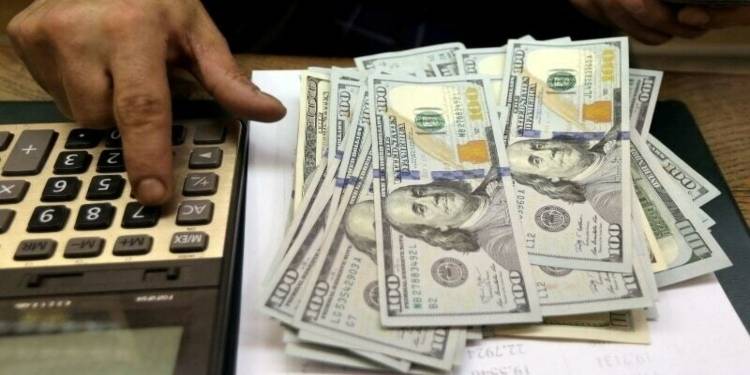
The Pakistani rupee fell abruptly by Rs18.74 against the dollar in the interbank market on Thursday, with the local currency trading at an extreme high of Rs284.85 in morning trade, Exchange Companies Association of Pakistan (ECAP) data showed.
Economists believe the record drop is due to the government’s deadlock with the International Monetary Fund (IMF).
According to the data shared by the State Bank of Pakistan (SBP) on Wednesday, the Pakistani rupee closed at Rs266.11 per dollar.
The currency has been sliding in recent days after delays in a deal between Pakistan and the International Monetary Fund, which the two sides have been negotiating since February.
One of the things the International Monetary Fund wants Pakistan to do is switch to a market-based currency exchange rate regime. If the IMF's board approves this measure, a funding tranche of over $1 billion would be released that has been held up since late last year over a policy framework.
The International Monetary Fund’s requirements are designed to make sure Pakistan reduces its fiscal deficit before presenting its annual budget in June.
The majority of the steps, such as increasing the cost of fuel and energy, ending subsidies in the export and power industries, and raising extra revenue through new taxes in a supplemental budget, have already been taken by Pakistan.
The steps will likely increase the already record-high inflation rate, which reached 31.5 percent in February.
The International Monetary Fund has also asked Pakistan to increase policy rates and fulfil bilateral and multilateral external financing commitments.
China, Pakistan's longtime ally, is the only country to have refinanced $700 million to Islamabad.
In an off-cycle meeting on Thursday, the State Bank of Pakistan (central bank) is generally anticipated to increase its benchmark policy rate by 200 basis points, according to a Reuters poll.
Economists believe the record drop is due to the government’s deadlock with the International Monetary Fund (IMF).
According to the data shared by the State Bank of Pakistan (SBP) on Wednesday, the Pakistani rupee closed at Rs266.11 per dollar.
The currency has been sliding in recent days after delays in a deal between Pakistan and the International Monetary Fund, which the two sides have been negotiating since February.
One of the things the International Monetary Fund wants Pakistan to do is switch to a market-based currency exchange rate regime. If the IMF's board approves this measure, a funding tranche of over $1 billion would be released that has been held up since late last year over a policy framework.
The International Monetary Fund’s requirements are designed to make sure Pakistan reduces its fiscal deficit before presenting its annual budget in June.
The majority of the steps, such as increasing the cost of fuel and energy, ending subsidies in the export and power industries, and raising extra revenue through new taxes in a supplemental budget, have already been taken by Pakistan.
The steps will likely increase the already record-high inflation rate, which reached 31.5 percent in February.
The International Monetary Fund has also asked Pakistan to increase policy rates and fulfil bilateral and multilateral external financing commitments.
China, Pakistan's longtime ally, is the only country to have refinanced $700 million to Islamabad.
In an off-cycle meeting on Thursday, the State Bank of Pakistan (central bank) is generally anticipated to increase its benchmark policy rate by 200 basis points, according to a Reuters poll.

